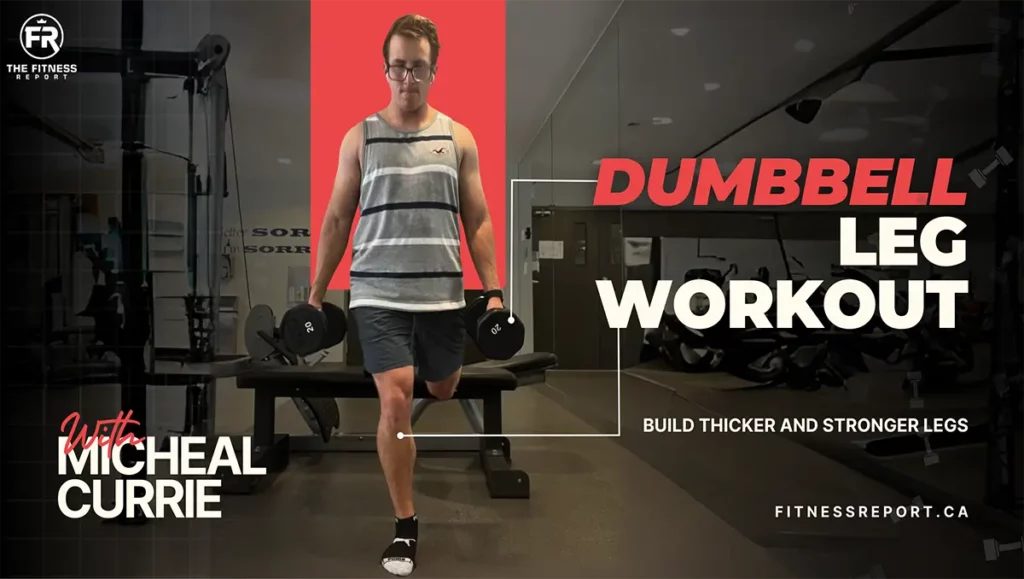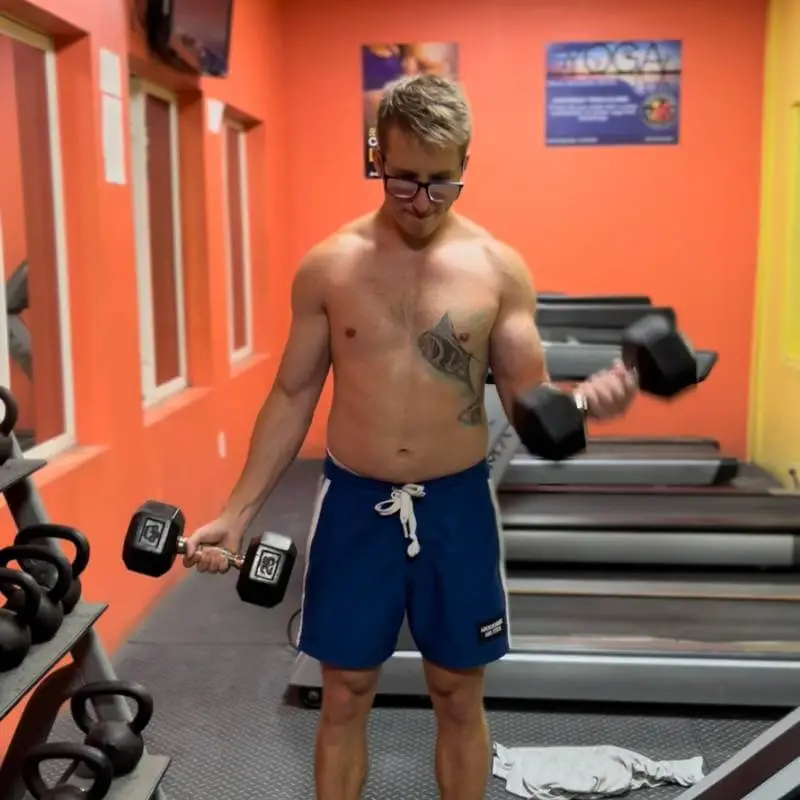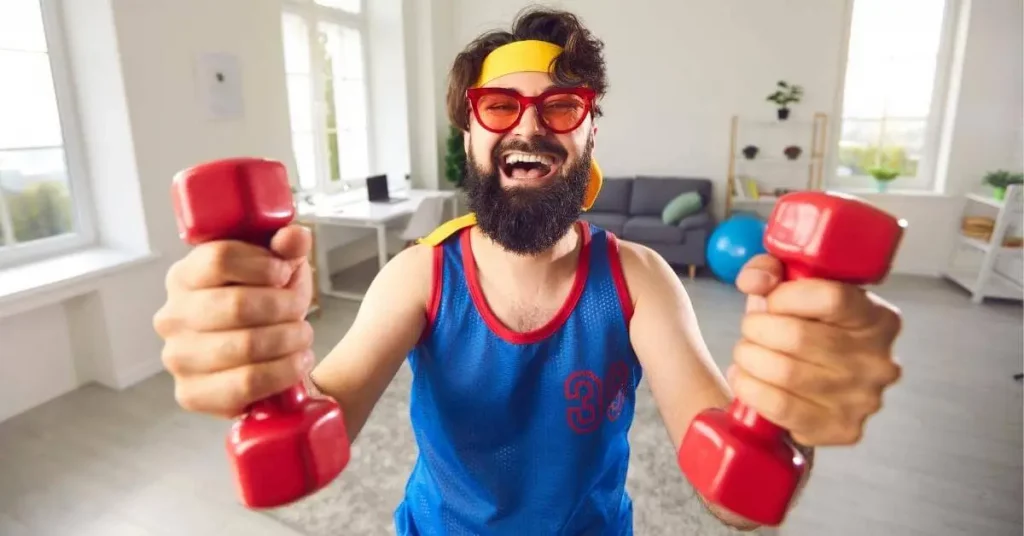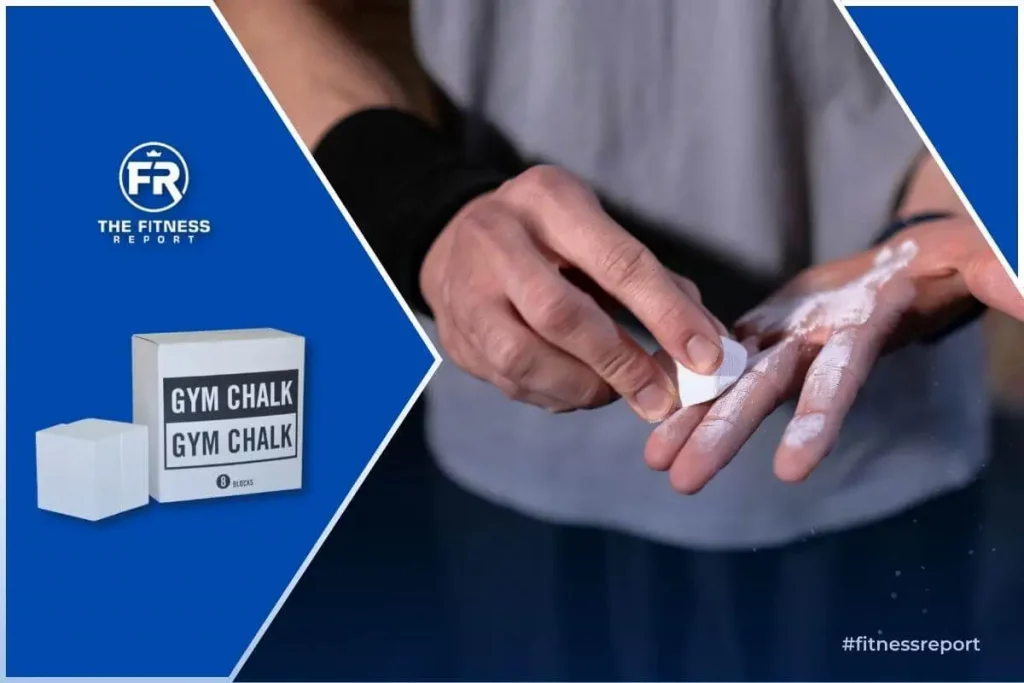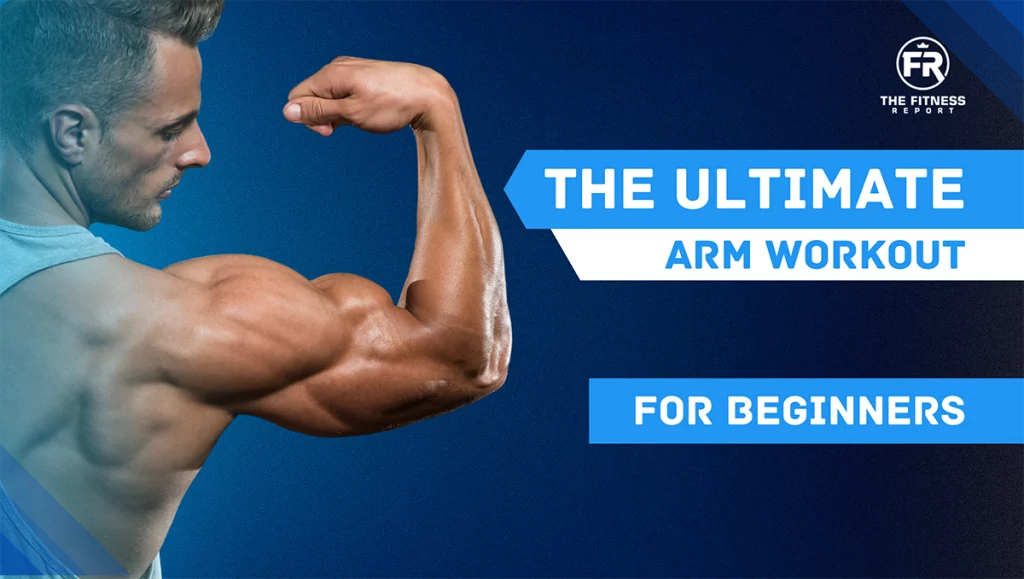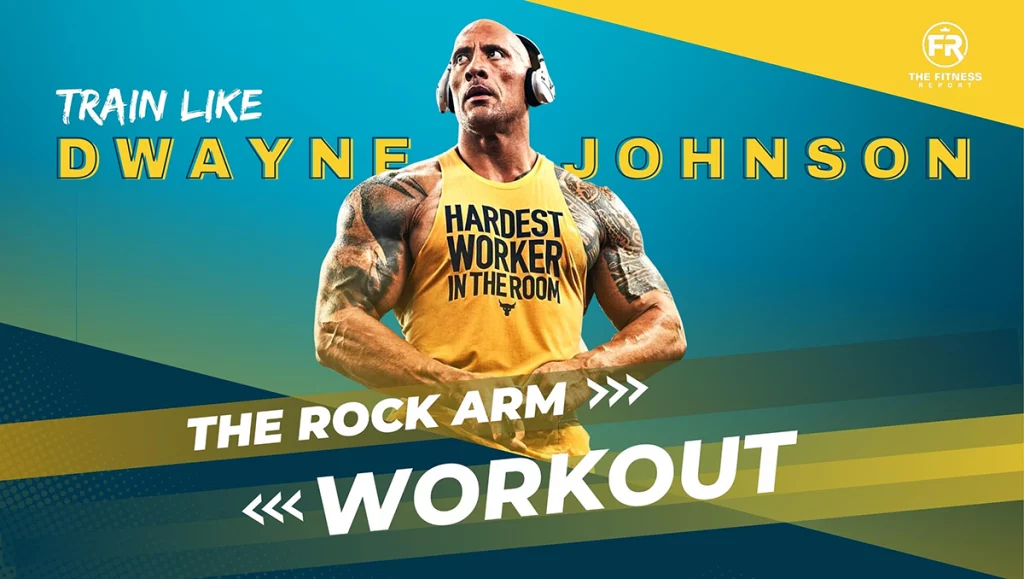Dumbbell Leg Workout: Build Thicker and Stronger Legs
- Dumbbell Lunges
- Goblet Squats
- DB Romanian Deadlifts
- Bulgarian Split Squat
- Standing Dumbbell Calf Raise
- Can I Build Muscle With Only Dumbbells?
- How Long Should A Leg Workout Be?
- How To Do Legs With Just Dumbbells?
- Are Dumbbells Better Than Barbells For Legs?
- Dumbbell Leg Workout: Frequently Asked Questions (FAQs)
- Other Workouts To Try:
- Wrapping Up
If you have ever wondered how to maximize your leg gains with just a pair of dumbbells, you are in the right place. Today, I will be sharing with you a simple yet effective dumbbell leg workout that can be utilized on your next leg day. Designed for those starting out or in the intermediate stage of their fitness journey, this routine will target key muscle groups to help you build thicker and stronger legs.
When I first started training, I quickly realized the versatility of dumbbells. Over the years, as a personal trainer, I have tweaked and perfected various exercises that can be performed with them. I always remind my clients that it is not about the weight you lift, but how you lift it. If you are new to these movements, start with a lighter weight to get your technique down, and then gradually increase as you become more confident. Always remember, every journey starts with that first step. I am here to guide you every rep of the way!
Dumbbell Lunges
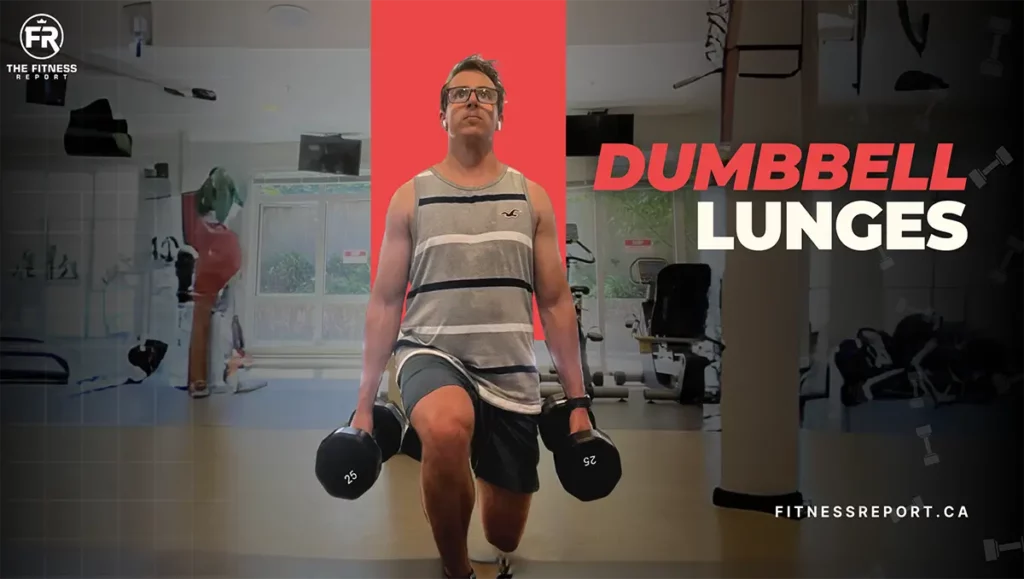
Dumbbell lunges are one of my go-to exercises for targeting the quadriceps, hamstrings, and glute muscles. When done correctly, they not only build functional strength and muscle but also improve balance and stability. Here is how to do them correctly:
Equipment
A pair of dumbbells. Start with lighter dumbbells, especially if you are new to this exercise, and gradually increase the weight as you become more comfortable.
Form And Technique
- Starting Position: Stand upright, feet hip-width apart. Hold a dumbbell in each hand with your arms fully extended by your sides. This is your starting position.
- Step Forward: Take a step forward with your right leg, roughly two to three feet, keeping your back straight and chest up.
- Lower Your Body: As you step forward, bend both knees and descend until your right thigh is aligned to the ground and your left knee hovers just above the floor. Ensure that your front knee is directly above your ankle and does not shoot past your toes. Your weight should be evenly distributed between both legs.
- Push Back: Press through your right heel, engaging your glutes and quads, to return to the starting position.
- Switch Sides: Repeat the movement, this time stepping forward with your left leg.
Tips
- Keep your core engaged throughout the movement to help with balance.
- Focus on a controlled, steady descent rather than rushing through reps.
- If you are new to lunges, practicing the movement without weights first can be beneficial to get the motion down.
Sets And Reps
For beginners, I recommend starting with 3 sets of 10 to 12 reps on each leg. As you progress and build strength, you can increase the number of sets or reps, or even the weight of the dumbbells.
Goblet Squats
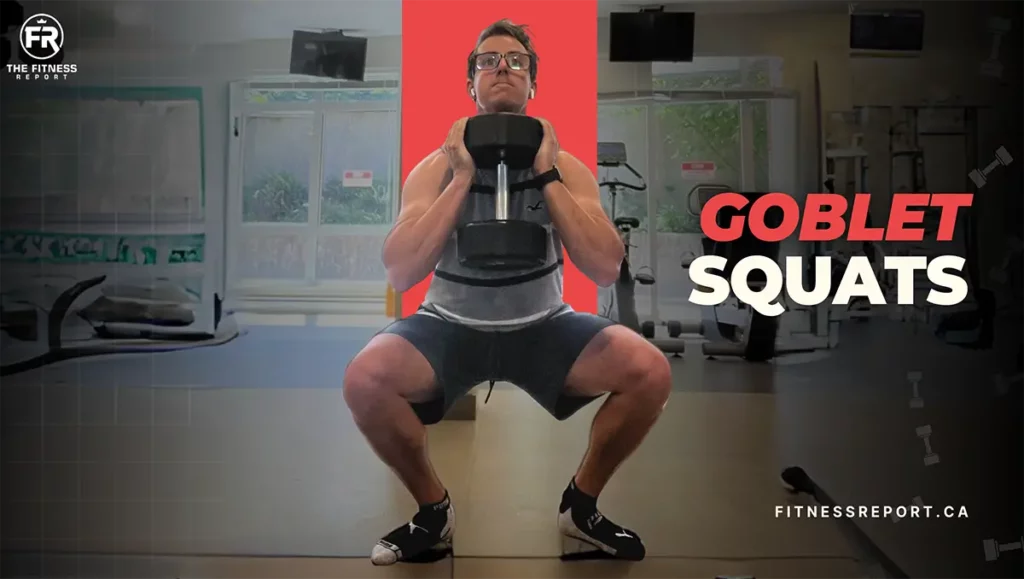
The goblet squat is one of those foundational movements that I believe everyone should incorporate into their routine. It is an excellent squat variation for beginners and intermediates alike, targeting the quadriceps, hamstrings, glutes, and core. The front-loaded position of the dumbbell also makes it a great tool for teaching proper squat form.
Equipment
A single dumbbell. Choose a weight that challenges you but still allows for good form.
Form And Technique
- Starting Position: Stand with your feet shoulder-width apart, toes slightly pointed outward. Hold the dumbbell vertically by one end using both hands, and position it close to your chest, under your chin. Your elbows should point downward.
- Descend: Begin by pushing your hips back, as if you are trying to sit in a chair behind you. As you lower yourself down, keep your chest up and your back straight. Your knees should track over your toes without collapsing inward.
- Depth: Aim to squat down until your thighs are aligned to the ground or as deep as your mobility allows. The elbows might come in between the knees at the bottom position, which is perfectly fine.
- Ascend: Push through your heels, engaging your glutes and quads to return to the starting position. Ensure your chest remains lifted and you are not leaning too far forward.
Tips
- Keeping your core engaged throughout will provide stability and protect your lower back.
- Your weight should be distributed evenly across your feet, without the heels coming off the ground.
- If you are new to goblet squats, practicing with a lighter weight or even just body weight can help you understand the movement better.
Sets And Reps
For beginners, I suggest starting with 3 sets of 12 to 15 reps. As you get stronger and more comfortable with the exercise, you can increase the weight of the dumbbell or the number of reps and sets.
DB Romanian Deadlifts
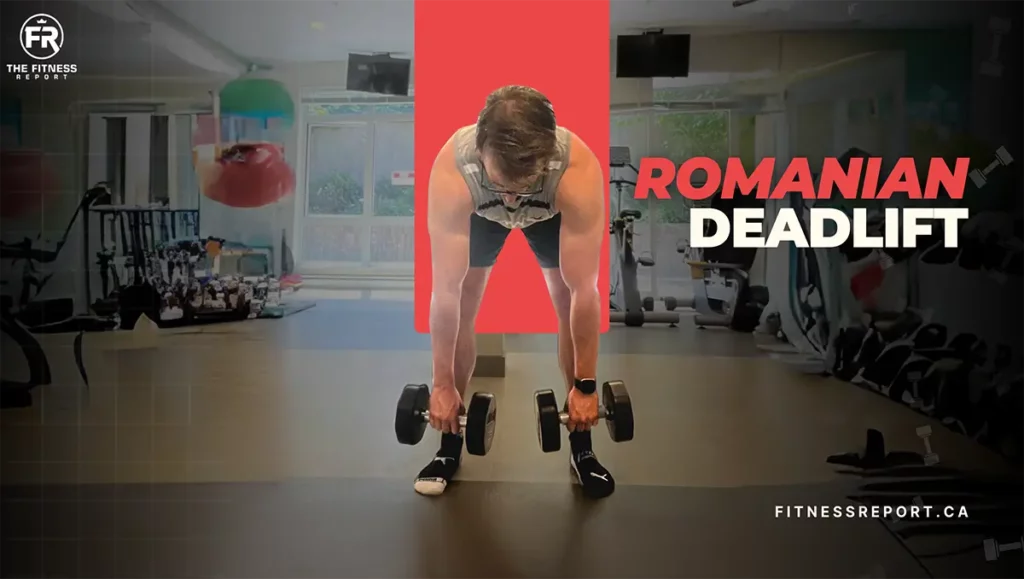
Dumbbell Romanian Deadlifts are a staple in many of the routines I design for my clients. This body movement hones in on the posterior chain, targeting primarily the hamstrings and glutes, while also working the lower back. The dumbbell variation is especially beginner-friendly and provides an excellent way to become familiar with the hinge movement fundamental to deadlifts.
Equipment
A pair of dumbbells. As with all exercises, start with a weight that challenges you but allows for good form throughout the movement.
Form And Technique
- Starting Position: Stand with feet apart at hip width, holding a dumbbell in both hands in front of your thighs. Your palms should be facing your body. Keep a slight bend in your knees.
- Hinge at the Hips: Begin the movement by pushing your hips back while maintaining a neutral spine. Your chest should lean forward, and the dumbbells should glide close to the front of your legs.
- Descend: Lower the dumbbells as far as your flexibility allows, ideally until they are around mid-shin level. You should feel a stretch in your hamstrings. Keep in mind that the movement is a hinge at the hips, not a bend at the waist. Your back should remain flat.
- Drive Up: Engage your glutes and hamstrings to reverse the motion, pushing your hips forward to return to the starting position.
Tips
- Keep the core in engagement and your back flat throughout the movement to protect your spine.
- Ensure your neck stays in line with your spine; avoid looking up or tucking your chin excessively.
- Your weight should remain on your heels, and your toes shouldn’t lift off the ground.
Sets And Reps
For those new to DB Romanian Deadlifts, I recommend starting with 3 sets of 10 to 12 reps. As you grow in strength and technique, you can increase the weight and adjust the sets and reps accordingly.
Bulgarian Split Squat
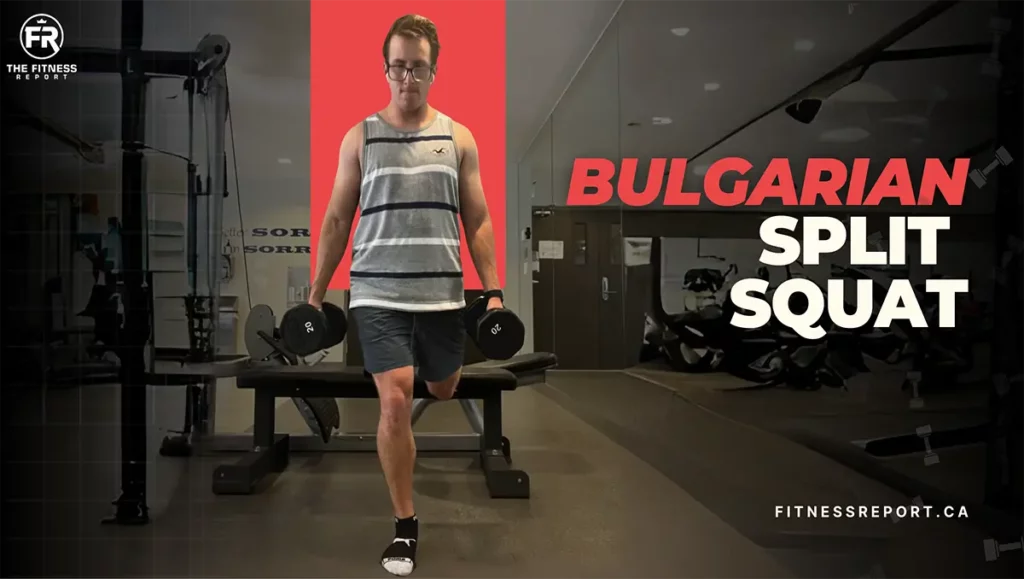
The Bulgarian Split Squat is one of those exercises that might look simple at first glance but can quickly humble even the fittest among us. As a personal trainer, I love introducing this movement to my clients as it provides a deep stretch and targets the quadriceps, hamstrings, glutes, and even challenges core stability.
Equipment
A pair of dumbbells and a bench or elevated platform. As always, select a weight that feels challenging but allows you to maintain proper form throughout.
Form And Technique
- Starting Position: Stand a couple of feet away from a bench, facing away from it. Holding a dumbbell in each hand by your sides, extend one leg behind you and place the top of your foot on the bench.
- Descend: Slowly lower your body by flexing the knee and hip of your front leg. Your back knee should move downward towards the floor. Keep your chest upright and your core engaged.
- Depth: Try to descend until your front thigh is almost aligned to the floor. Ensure your front knee is in line with your foot and does not drift past your toes.
- Drive Up: Engage your front leg’s glutes and quads, pressing through the heel to get back to the initial position.
- Switch Sides: After completing your set for one leg, switch to the other.
Tips
- Keep your core tight and maintain an upright chest to help with balance.
- Start with bodyweight if you’re new to this movement to master the technique before adding dumbbells.
- It is normal for the balancing leg to feel the burn; that is part of the beauty of this unilateral exercise.
Sets And Reps
For beginners, I would recommend starting with three sets of 8 to 10 reps for each leg. As you become more proficient and stronger, you can increase the weight or the number of reps and sets.
Standing Dumbbell Calf Raise

The calves are often an overlooked muscle group, but developing them not only provides aesthetic balance to the legs but also enhances athletic performance and everyday movements. The standing dumbbell calf raise is a straightforward exercise that targets the gastrocnemius and soleus calf muscles. As your personal trainer, I always stress the importance of not neglecting these smaller muscle groups.
Equipment
A pair of dumbbells and a raised platform or block (optional, for increased range of motion).
Form And Technique
- Starting Position: Stand upright holding a dumbbell in each hand by your sides. If you are using a raised platform, place the balls of your feet on it, with heels dangling off the edge.
- Lift: Slowly raise your heels and contract your calves. At the peak of the movement, your heels should be raised as high as possible.
- Descend: Gently lower the balls of each foot below the level of the platform to get a good stretch in the calf muscles.
Tips
- Keep your core engaged and maintain an upright posture throughout the movement.
- Focus on a slow, controlled motion, emphasizing the contraction at the top and the stretch at the bottom.
- For added challenge and balance, you can perform this exercise one leg at a time.
Sets And Reps
For beginners, I suggest starting with 3 sets of 12 to 15 reps. Given the endurance nature of the calf muscles, they can often handle higher repetitions. As you advance, you can use heavy dumbbells or add more reps to each set.
Can I Build Muscle With Only Dumbbells?
Dumbbells are versatile pieces of equipment that can effectively target every major muscle group in the body. While gym machines and barbells offer their own set of benefits, dumbbells provide unique advantages that can aid muscle growth:
- Unilateral Training: Dumbbells allow for unilateral exercises (working one side of the body at a time), which can help address and correct muscle imbalances.
- Range of Motion: Dumbbells often provide a greater and more natural range of motion compared to some machines. This can lead to better muscle activation and development.
- Stabilization And Activation: Dumbbell exercises often require more stabilization, engaging smaller supporting muscles that might not be as activated when using machines.
- Variability: The sheer number of exercises you can perform with dumbbells is impressive, ensuring you can target muscles from various angles and with different movements.
- Space-Efficient: For those working out at home, dumbbells take up minimal space while offering a wide variety of exercise options.
While having access to a full gym can be great, it is entirely possible to build muscle and achieve an impressive physique using just dumbbells. As your personal trainer, I can attest that with dedication, the right program, and consistent effort, you can see significant muscle gains with dumbbells alone.
How Long Should A Leg Workout Be?
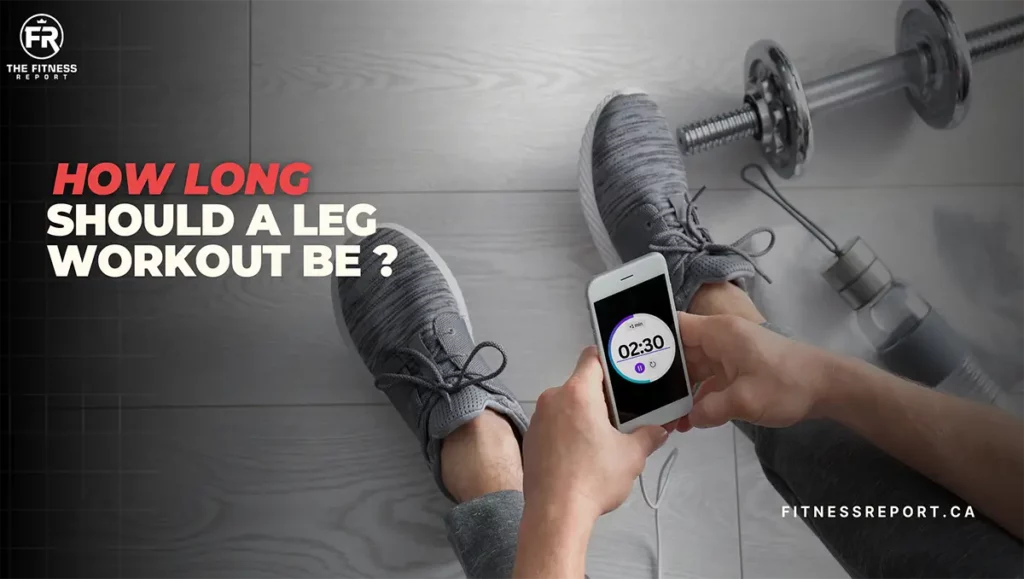
The ideal duration of a workout with dumbbells varies based on several factors:
- Goals: Strength training, hypertrophy (muscle growth), endurance, and toning might have different durations.
- Experience: Beginners might start with shorter sessions, while advanced trainees might have longer, more intense workouts.
- Intensity: High-intensity workouts are typically shorter, while low to moderate intensity sessions might be longer.
- Type of Workout: Compound exercises (like squats and deadlifts) are more taxing and might require longer rest intervals.
- Frequency: If you are training legs multiple times a week, each session might be shorter than if you were training them once a week.
- Recovery: Listen to your body. Overtraining can lead to injury or decreased performance.
General Guideline For Most Individuals
- Beginners: 30-45 minutes
- Intermediate: 45-60 minutes
- Advanced: 60-90 minutes
Remember to include warm-up and cool-down periods. Always focus on form over duration or weight to prevent injury. It is a good idea to consult with an expert to determine the best workout duration and plan for your individual needs. If you have more in-depth questions regarding a long-term injury or illness you should consult your doctor before jumping into longer workouts.
How To Do Legs With Just Dumbbells?
Training legs with just dumbbells might initially seem limiting, but with the right approach, it can be an incredibly effective method to build grip strength, muscle, and endurance in the lower body. Here is a step-by-step guide to getting the most out of your dumbbell leg workouts:
Choose Your Dumbbell Weight Wisely
- Beginners: Start with a weight that feels challenging yet allows you to complete 12 to15 reps with proper form.
- Intermediate and Advanced: Opt for heavier weights that allow you to perform 8 to 12 reps with correct technique. Remember, the last 2 to 3 reps should feel tough but manageable.
Warm-Up
Always begin with a 5 to 10 minute warm-up to get the blood flowing and prepare your muscles and joints. This can include light cardio, dynamic stretching, or even performing some of the exercises with lighter weights.
Incorporate Compound Movements
Compound exercises like dumbbell squats, lunges, and Romanian Deadlifts target multiple muscle groups at once and should form the core of your workout.
Include Unilateral Exercises
Movements like the Bulgarian Split Squat can help identify and correct imbalances between the left and right legs. These exercises also enhance balance and coordination.
Do Not Forget The Calves
Incorporate calf raises to ensure the entire leg is being worked. Calves often get neglected but play a crucial role in leg aesthetics and functionality.
Focus On Time Under Tension
When working with dumbbells, controlling the eccentric (lowering) phase of the exercise can increase muscle activation and growth. A 2 to 3 second descent on squats or lunges, for example, can be beneficial.
Use Advanced Techniques
As you progress, consider incorporating advanced training techniques such as drop sets, supersets, or paused reps. These can provide additional stimulus for growth and break through plateaus.
Cool Down And Stretch
After your workout, take 5 to 10 minutes to cool down and stretch the muscles you have worked. This can aid recovery, reduce soreness, and improve flexibility.
Progress Over Time
As you become stronger, it is essential to increase the weight, adjust the number of repetitions, or alter the exercise’s complexity to continue seeing results.
Recovery
Incorporate rest days or lighter training days between intense dumbbell leg workouts to allow for muscle recovery and growth.
Are Dumbbells Better Than Barbells For Legs?
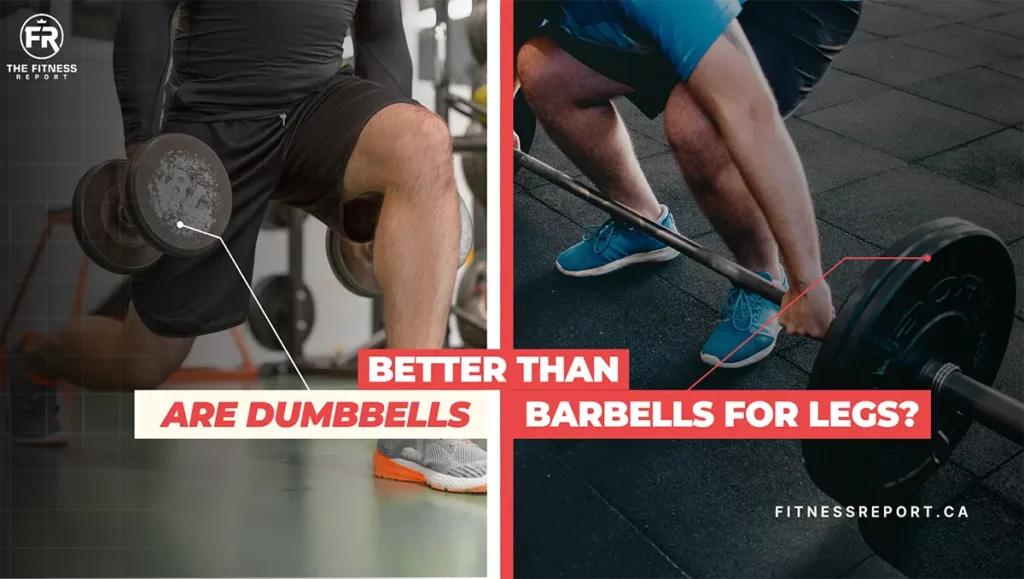
Whether dumbbells or barbells are “better” for leg training often depends on individual goals, experience, available equipment, and personal preference. Both can be effective tools for leg development, but they come with distinct advantages and disadvantages:
Advantages of Dumbbells
- Dumbbells can be used for a wide variety of exercises, targeting different parts of the legs.
- Dumbbells allow for unilateral exercises (one side at a time) like lunges or single-leg Romanian Deadlifts, which can help address imbalances between legs.
- Especially for beginners or when training alone, dumbbells can be safer. If one cannot complete a rep, it is easier to drop a dumbbell than to get trapped under a barbell.
- Dumbbells can offer a greater and more natural range of motion for certain exercises.
- Using dumbbells can engage stabilizer muscles more since you have to balance two separate weights.
Advantages Of Barbells
- Barbells allow for more weight to be loaded, which can be beneficial for building strength, especially in compound lifts like squats or deadlifts.
- The barbell provides more stability in certain exercises, which can allow a lifter to focus more on the primary muscles being targeted.
- It is easier to incrementally add weight to a barbell than to jump to the next available dumbbell, which might be significantly heavier.
- For those looking to lift heavy with compound movements, the barbell can be more time-efficient.
Neither dumbbells nor barbells are definitively “better” for legs; they serve different purposes. For some, incorporating both into their training can yield the best results, capitalizing on the benefits of each. As always, personal goals, comfort, and safety should guide the choice of equipment.
Dumbbell Leg Workout: Frequently Asked Questions (FAQs)
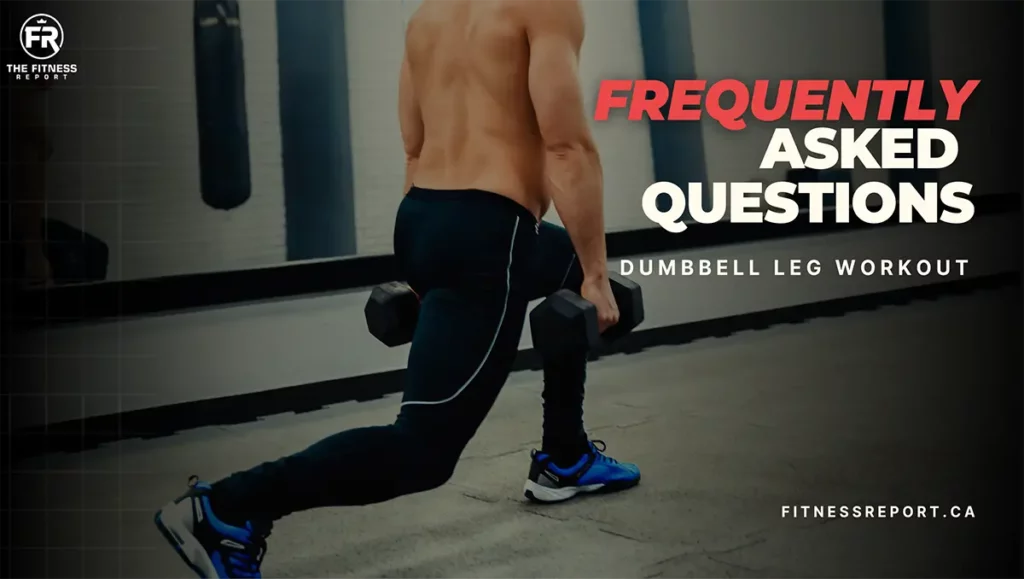
Other Workouts To Try:
Wrapping Up
Crafting an effective leg workout does not necessitate a gym filled with heavy machinery. Dumbbells, when used appropriately, can deliver substantial benefits for the legs, rivaling even the traditional barbell in some aspects. Selecting the right weight is crucial; it should challenge you while maintaining correct form.
Incorporating a varied range of exercises will ensure comprehensive leg development, and consistent leg workouts can also be a potent tool in a weight loss regimen. Indeed, with commitment and technique, you can achieve significant muscle growth in the legs using just dumbbells. Embrace their versatility and let them pave the way to your stronger, toned lower body!

